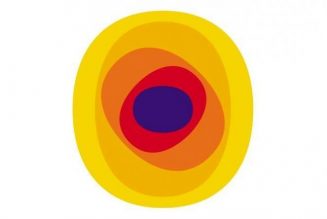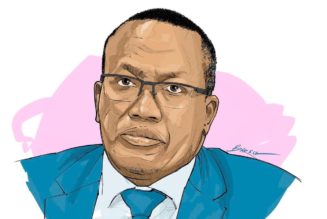Economy
Kenya’s inflation rises on higher school fees, power charges
Wednesday January 31 2024

Customers do last-minute school shopping at Veghela Bookshop in Kakamega town on Sunday ahead of the reopening of schools for the first term on Monday, January 8, 2024. PHOTO | ISAAC WALE | NMG
Kenya’s consumer prices in January rose at the fastest pace in four months because of largely higher costs of school fees, electricity, clothing, financing and renewed upward pressure on foodstuffs.
Inflation — a measure of the increase in the cost of goods and services over the previous year — increased to 6.9 percent from 6.6 percent in December, according to official data.
The rate of growth was joint highest with last October, Kenya National Bureau of Statistics (KNBS) said on Wednesday.
The rise in consumer prices, also the first since last October, came at a time when schools re-opened for the new academic year, putting pressure on household budgets to pay school fees and buy education materials and uniforms, including footwear.
“The year-on-year inflation for Education Services, which follows a normal seasonal trend, was 2.8 percent. There was an increase of 1.8 percent in the indices for education services between December 2023 and January 2024, occasioned by a rise in tuition fees,” KNBS managing director Macdonald Obudho said in a statement Wednesday.
The data shows parents paid 10.5 percent on average to buy textbooks in January compared with a year earlier, while the cost of private tuition went up 5.7 percent.
Electricity bills, however, jumped the highest amongst the basket of goods and services used by KNBS to calculate inflation.
Homes consuming 200 kilowatts-hour (units) paid an average of Sh7,447 to Kenya Power, a 41.1 percent climb from a year earlier.
Read: January power prices jump 16.5pc on fuel, forex charges
Average food prices, which have in recent months benefited from El Nino rainfall, rose 7.9 percent year-on-year, the highest rate since last September.
“Prices of cabbages, carrots, oranges and potatoes (Irish) increased by 10.0, 7.4, 3.1 and 1.7 percent, respectively between December 2023 and January 2024,” Mr Obudho said. “During the same period, however, prices of mangoes, tomatoes and sugar dropped by 3.8, 3.6 and 2.2 percent, respectively.”
Monetary policy
The upward pressure on prices of foodstuff saw the cost of eating out increase 4.3 percent year-on-year in January compared with 3.8 percent during the festive month.
The renewed consumer price pressure is likely to prompt the Central Bank of Kenya to leave the base interest rates intact at 12.5 percent when its Monetary Policy Committee meets on February 6.
Increasing the key lending rate makes borrowing more expensive as banks use the rate as a base on which they load their margins and risk profile of individuals when pricing loans.
Resultant higher costs of loans are expected to prompt consumers to cut or postpone expenditure on luxurious goods, thus helping rein in elevated inflationary pressures from the demand side.
A consensus forecast on inflation from the 14 global banks, consultancies and think-tanks shows average prices of goods and services are likely to average at 6.5 percent in 2024, slower than 7.7 percent average for last year.
“A small uptick in oil prices will add to cost pressures, but food prices (the largest component of the consumer price index) will rise at a much slower pace in 2024, given the emergence of the El Niño weather system, which typically leads to wetter weather and higher farm production in East Africa,” analysts at Economist Intelligence Unit (EIU) wrote in an economic outlook report by Barcelona-based FocusEconomics.
“Another inflation dampener in 2024 will be a slower pace of shilling depreciation. Steep tax rises in 2023 will drop out of the inflation equation during the second half of 2024, and future tax increases will be of a smaller magnitude.”









